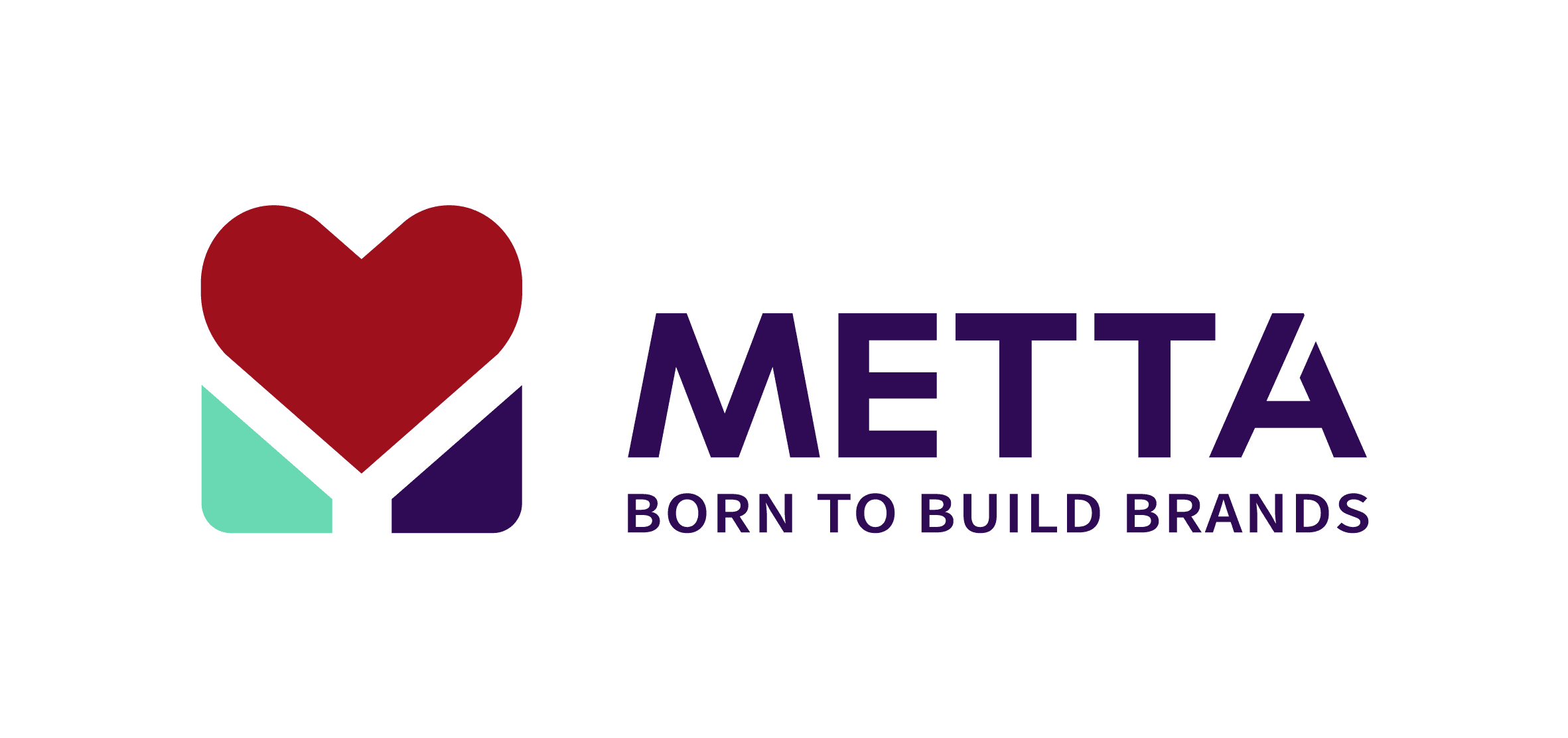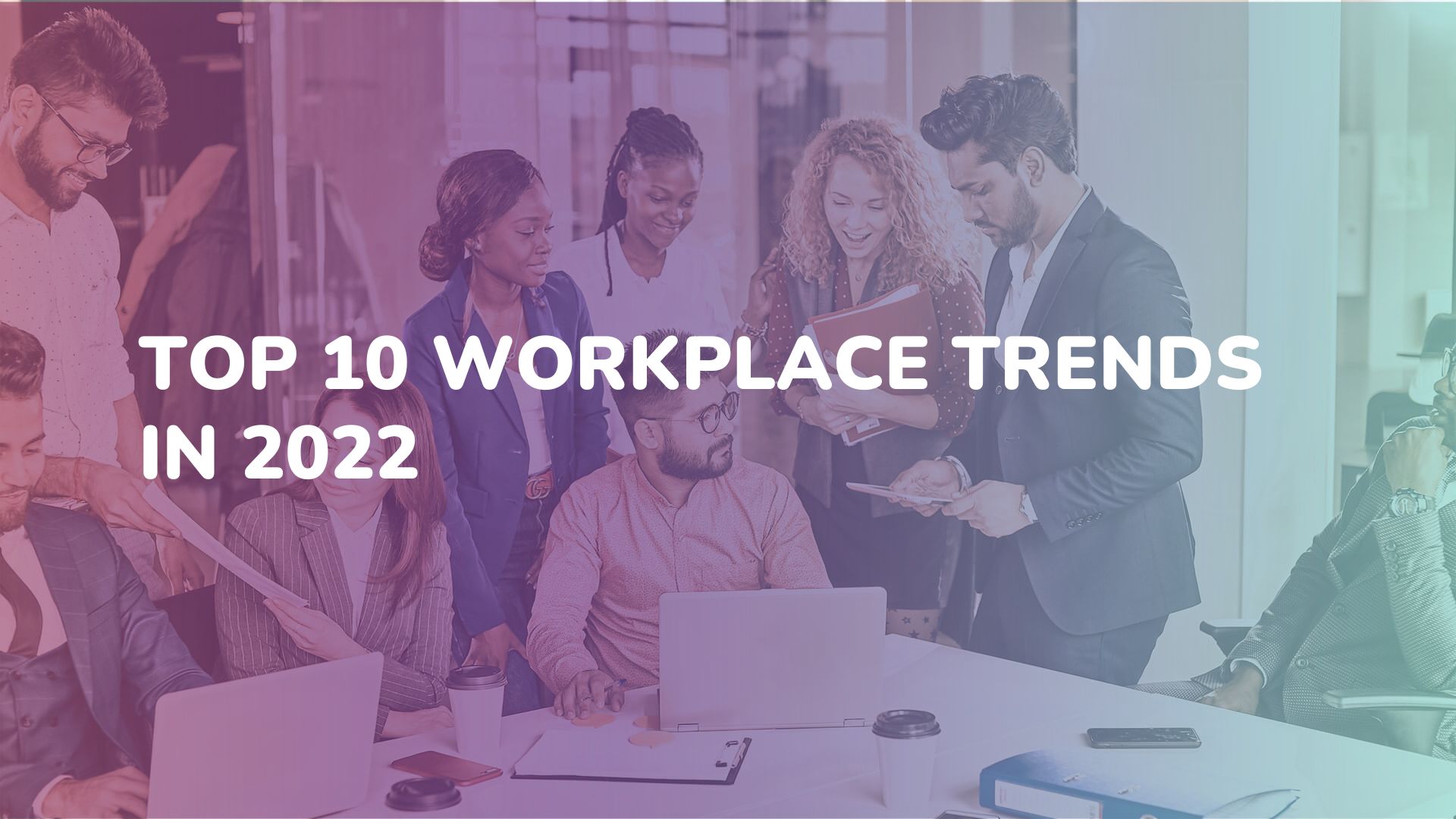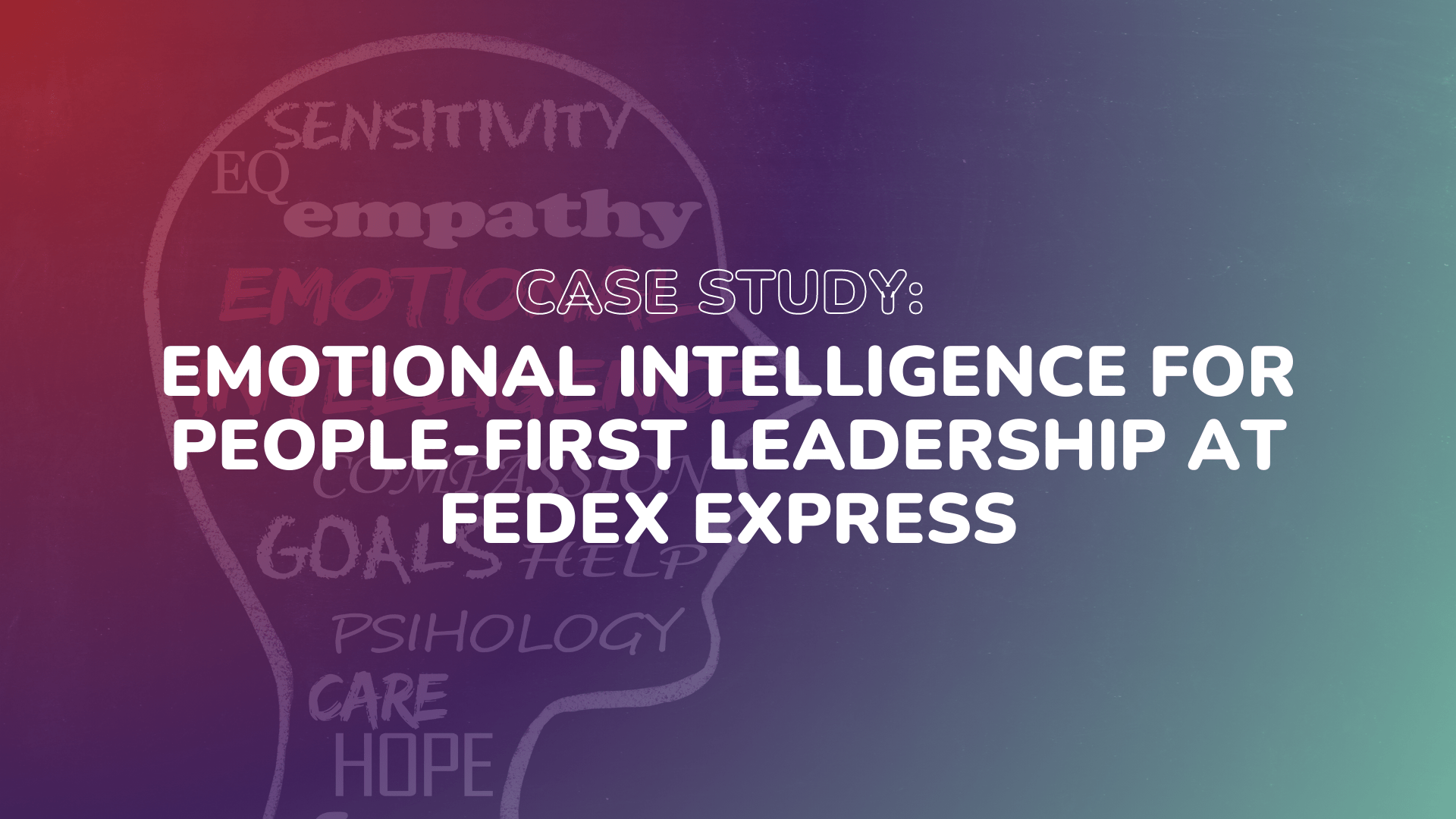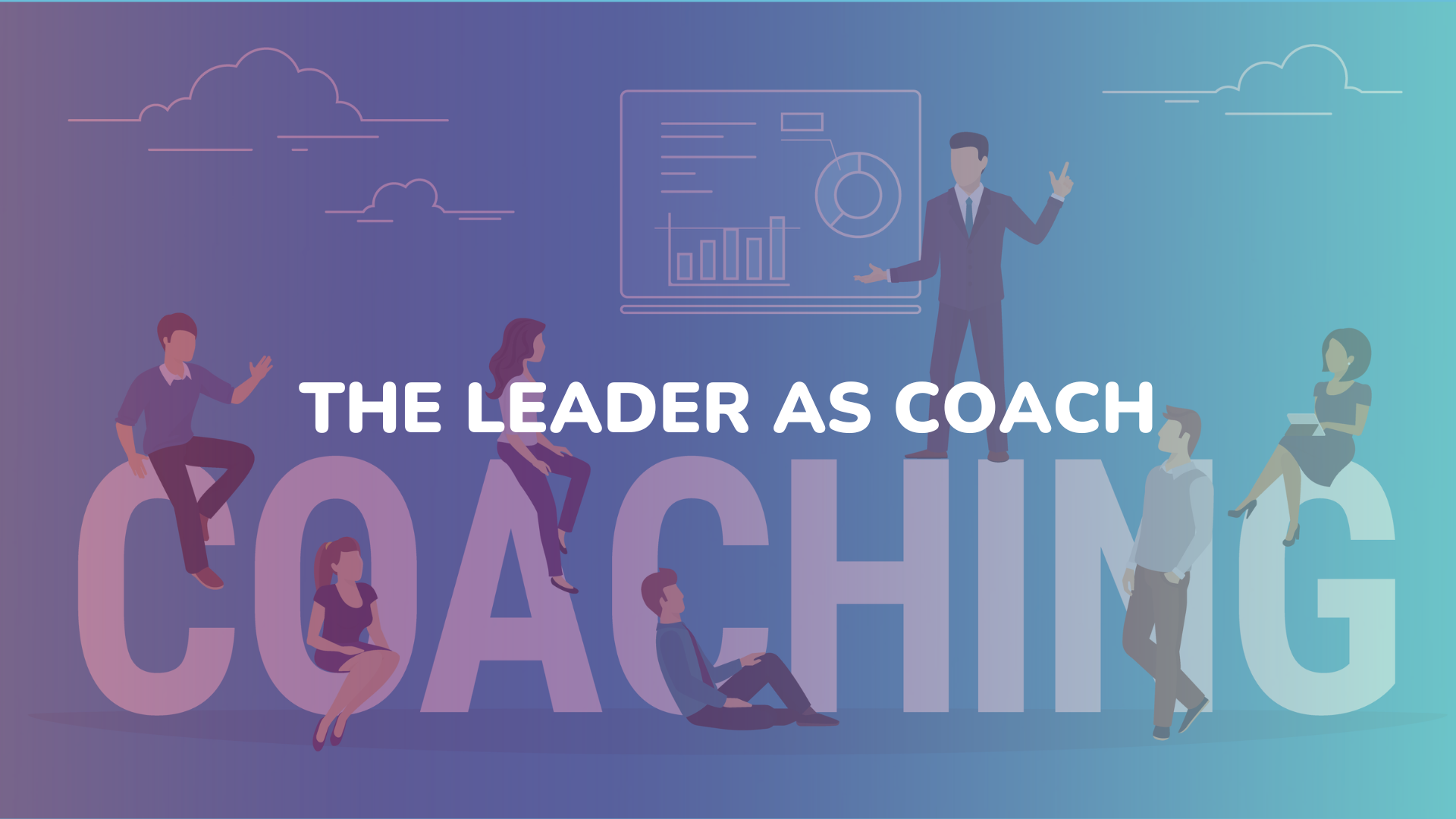Top 10 workplace trends in 2022
As we enter 2022, changes in how we work, where we work, who we work with, why we work, and the technologies we use are constantly changing. Many of these changes began before the pandemic, were accelerated by the pandemic, and have become frequent aspects of the workplace.
The future of work is employee wellbeing
Employee benefits are no longer limited to benefits. Instead, benefits are now an opportunity for employers to support workers in all aspects of their personal and professional lives. As Figure 1 shows, workers’ wellbeing extends not only to physical health benefits but also to include emotional, financial, social and occupational wellbeing.
Since the pandemic, benefits have focused not only on individual workers, but also on workers’ families. Hewlett Packard is an inspiring example of expanding welfare for workers and their families. Their “HP Spirit” program offers health and wellbeing apps, educational resources for working parents to manage their children’s homeschooling, an Employee Resource Group for working parents, and job sharing for select roles.
As the pandemic has entered its second year, the focus on worker wellbeing has shifted from improving organizational benefits to enhancing employees’ personal and family life experiences. And venture capital money is following this trend, with tools like League, Virgin Pulse, Limeade, BetterUp, SoundingBoard, SpringHealth and meQuilbalance,… Resilience delivers business results. MeQuilbalance’s largest publicly traded clients demonstrated their highest resilience scores at underlying levels that outperformed the Dow Jones Industrial Average by 116% between December 2018 and December 2020.

Employee benefits can prevent mass layoffs
While raising wages is one way to attract and retain workers, research conducted by Paychex and Future Workplace of 603 full-time employees found that 62% of employees identified benefits as a key factor in deciding whether or not to apply for a position. This is especially true for Gen Z, where 67% strongly agree or agree that wellbeing should be their priority in evaluating job offers. The most requested employee benefits include financial wellbeing and mental/emotional health. Financial education and training have become increasingly important to workers across generations. BrightPlan’s 2021 Wellness Barometer survey found that more than 80% of employees want support and guidance on personal finance — not just for retirement and financial education — but also digital budgeting, financial planning and access to financial advisors.
In addition to financial wellbeing, nearly 30% of workers surveyed in the Paychex and Future Workplace surveys requested higher quality mental health support and resources. The Global Wellnes Institute believes that mental health benefits in the workplace will increase by 9.8% annually over the next 5 years.
This will shift HR leaders from adopting solutions of mutual benefits for all employees to an individualized approach to the benefits of wellbeing to achieving well-being benefits, where the goal is to create a culture of care that meets the needs of all workers.
The hybrid working model of working from the office and working from home (referred to as the hybrid work model) is what the majority of workers want
The Accenture survey found that 83% of workers prefer a hybrid work model, and 63% of high-growth companies have adopted a “high productivity everywhere” workforce model. For both workers and employers, working from anywhere is about producing results, no matter where or when the work happens. The “Our Work from Anywhere Future” study, conducted by Prithwiraj Choudbury, an associate professor at Harvard, found that workers see the freedom to work from anywhere as an important benefit in their work.
This makes the practices that define successful work from any become important to employers. Employers like the United States Patent and Trademark Office, GitLab, and Zapier are creating policies to ensure virtual collaboration, mentoring/mentoring, and virtual asynchronous thinking for people working from anywhere. These policies include creating virtual practice communities for remote workers to give everyone working remotely the right set of collaboration tools like Slack, as well as online whiteboards like Miro, Mural, Stormboard, and Annotator so they can think in sync.
In addition, employers need to communicate how their approach to management work is evolving as remote work increases. This means clearly defining how they will create a fair and equitable work environment for all employees regardless of location, communicating how leaders will manage employees they have never met in person, and how teams will achieve work flexibility while they still achieve his goal. Leaders must reimagine how the post-pandemic business landscape will work for their organizations and communicate this to all employees.
Employees look for companies whose values align with their own
“Closing the Employee Expectations Gap,” a study by Future Workplace and Blue Beyond Consulting of 753 business leaders, HR leaders and worker-mindedness, found eight out of ten employees say it’s important that their company’s values align with theirs. But there exists a significant gap between mental workers and company leadership (as shown in Figure 2) that we call the Employee Expectations Gap.
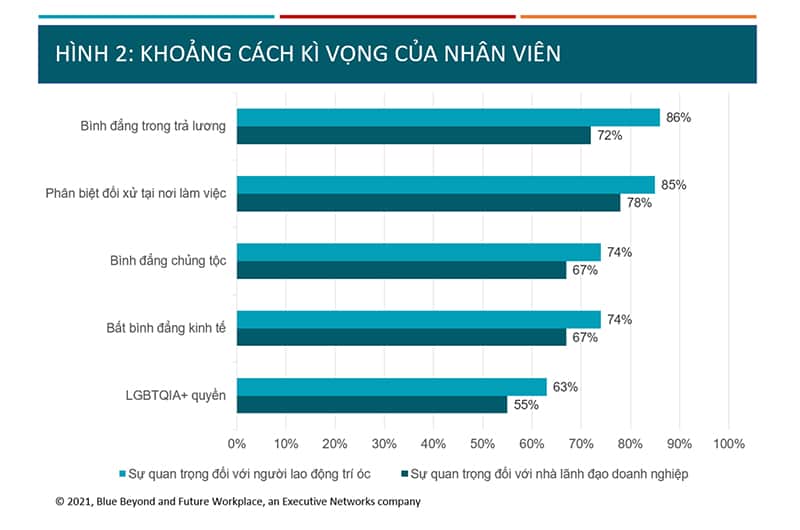
These findings are especially important because 75% of workers say they expect their employers, and businesses in general, to be a driver of good things in society. The rate reaches 80% for those under 45. What’s more, research shows that more than half of intellectual workers say they would quit if their company’s values don’t align with theirs, and only a quarter of mental workers are likely to accept a job for a company whose values don’t align with their own.
Leaders can begin to act on this gap in employee expectations by engaging in ongoing listening programs with employees and committing to more humane working conditions for all employees no matter where they work.
Skills-based recruitment
Artificial intelligence is transforming the labor market, automating some jobs and creating entirely new ones that require in-demand new skills. The study of the “21 HR Jobs of the Future” has determined that a range of new HR jobs will be created between now and 2030, many focused on humans working continuously with machines, such as the Algorithm Bias Officer and Human Machine Teaming Manager.
Being able to demonstrate one’s competence through these new skills has become a common basis for talent mobility, when the reality is that qualifications do not equate to possessing the required skills. In fact, Glassdoor reports that 15 companies, from Google to Hilton Hotels and Apple, are offering well-paying jobs to people who have in-demand skills, but lack degrees.
Many companies are experimenting with skills-based hiring or setting specific skill and competency requirements for a job instead of just looking at a candidate’s qualifications. Skills-based hiring expands the pool of potential talent but also allows internal employees the opportunity to better see their potential for career change by providing them with educational pathways for specific industries and job functions.
Longevity leads to multi-occupation
The Stanford Center on Longevity predicts that half of today’s 5-year-olds can expect to live to 100, and in 100 years, they can work for 60 years or more.
While this doesn’t mean doing the same job for 60 years, it does raise an important question for HR leaders: How to strengthen a company’s commitment to adopting a lifelong learning policy for existing workers to upskill and form new ones for one Can careers span up to 60 years?
Amazon Career Choice has committed $1.2 billion to fund hourly workers with a bachelor’s or associate’s degree, a high school diploma, a GED, and English as a Second Language. They will also offer proficiency certificates aimed at re-skilling workers in in-demand fields such as Engineering, Information Technology, Mechanical and Electrical, Healthcare, Construction, Transportation, and Accounting.
Amazon Career Choice and mthree, Wiley’s Talent Development Solution for Employers, are demonstrating what’s possible by designing a program that teaches in-demand computer skills to hourly workers. Participants are typically Amazon warehouse and delivery workers, and they have the opportunity to learn digital skills that can change their career journey from warehouse worker to IT professional.
Upskilling is critical to leading workforce transformation
In the report “The Evolving Role Of Learning In Workforce Transformation” by Future Workplace in partnership with GP Strategies, they surveyed 549 global HR and business leaders to see how learning is being expanded in businesses and how that is having an impact on businesses. New capabilities are required by teams in charge of training and development. One key finding that emerged in their conversations with HR Managers and Training Directors was this: Often, HR focuses on training and upskilling key business roles and forgets about upskilling their team members. HR teams and training teams have become forgotten and left to their own devices to improve their own skills. This needs to change.
This study identifies that building a culture of lifelong learning and improving learning skills and developing members of training and development teams are top two priorities for the roadmap to 2025.

549 HR and business leaders identified that embedding innovation into the structure of the learning function is a key theme as we look ahead to 2025. When conducting surveys of the skills that training team members need most, they include business skills; commercial and business acumen, people analytics and digital marketing.
HR leaders must start asking themselves, “Do I anticipate the development of new skills and competencies for my team members and how am I doing this?”
Soft skills including people & digital skills
Working in 2021 has taught us that there is a need to develop resilience to adapt to rapid changes in how and where we work. It also taught us that we need to become proficient at working seamlessly across multiple technology platforms including Zoom, WebEx, Slack, Stream Yard, and Microsoft Teams, not to mention a host of new virtual reality platforms like Strivr, Immerse, and BodySwaps.
It’s no surprise that the “LinkedIn 2021 Learning” report lists the top 10 skills including a combination of resilience and tech/digital proficiency. These 10 important skills are shown in Figure 4.
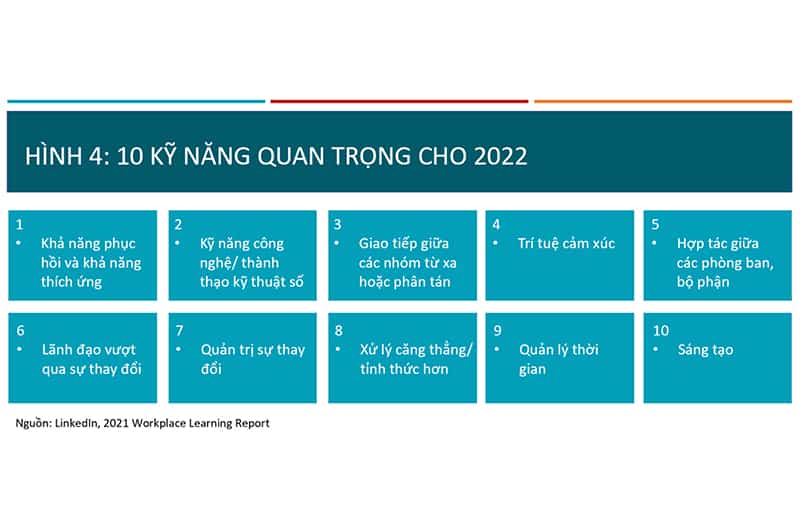
Resilience – The number one critical skill, defined by Andrew Shatte – PhD – Co-Founder of meQuilibrium, is the ability to solve problems, control emotions, be optimistic, and be confident in self-efficacy. Resilience can be learned, strengthened, and spread through an organization. The 2021 Workplace Learning report found that 59% of leaders make improving the skills of their employees their number one priority.
Working parents expect a new value proposition from employers
With the spread of the Omicron variant, a growing number of schools in the United States have postponed school reopening or switched to remote instruction. This makes an already crisis situation for working parents even worse.
Working parents are now demanding a new agreement from their employer. McKinsey research shows that working parents are more likely to have left their jobs during the past 2 years than those without children. Reasons include burnout from the pressure of working from home and shouldering childcare responsibilities, struggling with returning to the office but not finding the right childcare, and reassessing their overall work-life balance. This is likely to continue, especially with uncertainty over the Omicron variant.
HR leaders should pay special attention to the unique needs of working parents and consider creating special ways of working to address their needs, such as child care subsidies and extended vacation time for employees who are new parents. Finally, companies can consider enhancing workplace flexibility by offering all employees (not just parents) the ability to cut their workweek by up to 60% or move into a less burdensome role for a while, with the understanding that they can work well again when ready.
The CHRO role has been enhanced and permanently changed
In the early days of Covid-19, organizations thought they were solving healthcare, then real estate. Soon, it became clear to everyone that this was a complex business and people issue, and that the HR Manager had a critical role. The list of issues faced by CHROs ranges from leading with empathy to understanding what is important to different segments of workers, proposing flexible work options, creating a healthy work environment to support employee wellbeing, and developing a fair and equitable work environment to all employees (regardless of where they work).
HR Directors have emerged as a key component of executive leadership, working with the heads of Technology, Finance, Real Estate, Workforce Transformation and the Chief Medical Officer to ensure employees return to the office safely. In fact, there is an example of how the role of the Chief Human Resources Officer is enhanced, and that is former Unilever Chief Human Resources Officer Leena Nair was recently appointed CEO of Chanel.
The new world of work requires leaders, both HR and business, to ask a new set of questions about jobs, workers, the workforce, and the workplace, such as:
How will leaders lead in the new world of work?
What types of improvements will enhance the employee experience?
How will leaders communicate the barriers of the process successfully from anywhere?
What is the new role and purpose of the actual workplace?
One thing that is clear, leaders must demonstrate resilience, empathy, transparency, and digital literacy to ensure everyone has a voice in creating the future of work.
Source: https://www.forbes.com/sites/jeannemeister/2022/01/05/top-ten-hr-trends-for-the-2022-workplace/
Metta Marketing
Born to build Brands
